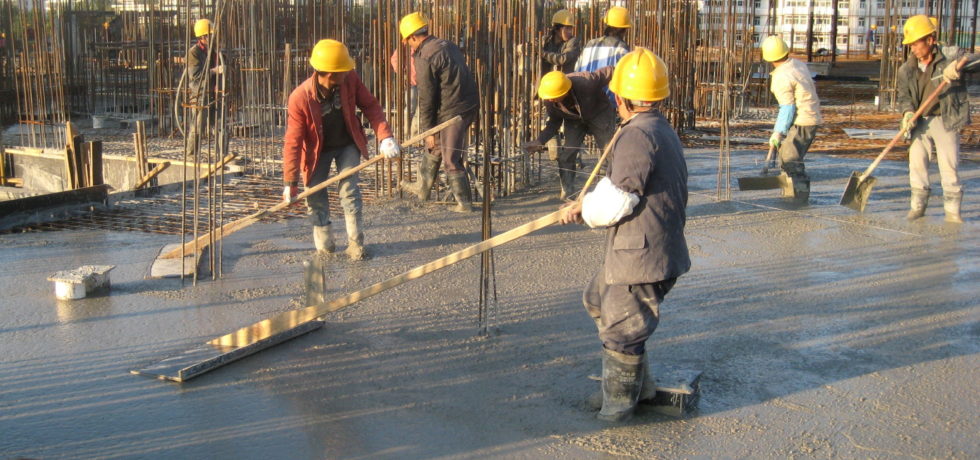Several years ago, we pointed out how integral technological evolution is to every industry. And it’s still true. After all, without technological advancement, how can companies within an industry stay relevant and useful to the communities they serve? Simple. They can’t. Instead, they fall behind those who do want to innovate.
A good example of this is Netflix. Years before the company’s streaming service began, people who wanted to watch shows or movies couldn’t pick what they wanted to see and when. Instead, they were stuck with TV, which meant trying to keep up with each TV channel’s schedule and putting up with the constant interruptions by commercials.
In some cases for certain movies, people would have to leave their homes to go see them. If they didn’t, chances are they wouldn’t be able to see the movie until it came out on DVD (or way back when, VHS).
But that all changed once Netflix came up with their streaming service. The company developed an innovative way to deliver entertainment without the TV industry’s number of inconveniences. And so, they started a streaming service that allowed people to watch whatever they liked anytime, anywhere, including from the comfort of their own homes. And there were no commercials in the way either!
All of this innovation meant over time, more people have chosen to become cord-cutters and stop watching TV altogether as they could watch all they wanted for a flat fee from Netflix.
This unfortunate situation for TV channel companies is not something any of us wants to experience. So to help you all stay innovative and constructive, we here at Kryton want to share a list of the top four Smart Concrete technologies that will boost your concrete construction.
1. Crystalline Waterproofing Technology
First on our list is crystalline waterproofing technology!
Whenever you need to create concrete structures and there’s water nearby, this is the technology you want by your side. Unlike external waterproofing membranes, crystalline waterproofing allows you to thoroughly and permanently waterproof your concrete. It does this when added to the concrete so its crystal-like materials can help plug or block your concrete’s natural pores, capillaries, and micro-cracks.
In other words, it turns your concrete into a waterproof barrier instead of you needing to use a surface-applied one. That way, you can avoid some of the issues that come with external waterproofing membranes, such as:
- Taking time and intensive labor to apply the membrane
- Having a waterproof barrier that has a shorter life span than the structure’s
- Dealing with a membrane that got punctured during construction
- Struggling to repair it as membranes are often inaccessible
And in turn, your concrete is permanently protected from water ingress and corrosion of reinforcement!
Of course, it’s not as simple as just looking up crystalline waterproofing and picking a brand name that sounds good. There are two types of crystalline waterproofing you should be aware of: permeability-reducing admixtures for non-hydrostatic conditions (PRAN admixtures) and permeability-reducing admixtures for hydrostatic conditions (PRAH admixtures).
PRAN Admixtures
If you choose to go with PRAN admixtures, you’ll essentially be using dampproofing admixtures. This is not the same as fully waterproofing your concrete. Instead, these admixtures make it so your concrete can resist the passage of water. But this resistance only works in the absence of hydrostatic pressure.
Because of this limitation, PRAN admixtures shouldn’t be used in concrete that you know is going to be exposed to water under pressure. So it’s definitely not meant for heavy-duty projects involving water containment structures or something else with a serious need for waterproofing.
PRAH Admixtures
However, if you go with PRAH admixtures like our Krystol Internal Membrane™, you’ll find that they can sufficiently resist water while under hydrostatic pressure. This makes them the better choice if you’re hoping to make your project completely watertight.
2. Concrete Durability-Enhancing Admixtures
But what about when you need your concrete to endure other harsh abrasive and erosive forces from construction trucks and so on?
That’s where the second item on our list of concrete technologies comes in! With durability-enhancing admixtures, you can help prevent your concrete from being worn away by vehicles and more.
Like with crystalline waterproofing, however, you have quite a few options to sort through first before you start enhancing your concrete.
High-Range Water Reducers
One of your options may include the use of high-range water reducers. Also known as superplasticizers, these additives affect the water-cementitious materials ratio of concrete.
So when you add them to your concrete mix, they will reduce the amount of water in the concrete by as low as 12% or as high as 40%. This reduction ensures that your concrete has low permeability. And because of that, your concrete will tend to be more durable.
However, with that advantage comes at least one potential disadvantage: slump loss. According to the academic website ScienceDirect, many have claimed that second-generation high-range water reducers don’t suffer from a slump loss phenomenon, but this claim may not be likely. Under at least one study, the use of high-range water reducers resulted in a very rapid slump loss.
Still, this issue was less significant with newer admixtures that use copolymeric formulations.
Air-Entraining Admixtures
If you work within a region that goes through freeze-thaw cycles, you may instead want to go with an air-entraining admixture for better durability. After all, regular concrete won’t likely survive such cycles too well.
Why?
Well, during the freezing part of the cycle, the water in moist concrete will freeze, expanding and applying internal pressure within the pores of the concrete. And if that pressure is higher than the concrete’s tensile strength, the frozen water cavity will dilate and rupture.
Enough repeated freeze-thaw cycles will start to significantly disrupt the concrete’s paste and aggregate. And eventually, that will cause the concrete to crack, scale, and even crumble.
But with air-entraining admixtures, you can create a stable complex of air voids within your concrete. These voids then allow the concrete’s freezing water to expand without creating pressure within the concrete and subsequently damaging it.
Your concrete can then maintain its durability throughout those dreaded freeze-thaw cycles.
Corrosion-Inhibiting Admixtures
Speaking of water, some of your concrete has likely encountered the liquid’s corrosive effects at least once. That’s because concrete is quite a porous material, allowing water to easily pass through if allowed. And once it does, it can reach the embedded steel reinforcement within the concrete, causing that reinforcement to corrode. In turn, that can cause the concrete itself to crack, spall, and delaminate, eroding its durability.
It’s a universal issue for those who work with concrete. Though, because of its pervasiveness, it does mean you have plenty of solutions for it.
We here at Kryton feel that crystalline waterproofing offers one of the best solutions out there for blocking water and its corrosive effects indefinitely. But if you mainly just want solutions that deal with corrosion protection and not protection from water ingress, you should look for corrosion-inhibiting admixtures.
There are quite a few, but most of them tend to use calcium nitrite or an amine-ester organic corrosion inhibitor.
The ones with calcium nitrite protect the steel reinforcements by forming an oxide layer around them. However, these admixtures also shorten the time it takes for your concrete to set, so you may need to use a retarding admixture at the same time.
Otherwise, if you go with an amine-ester organic corrosion inhibitor, this admixture will reduce chloride ingress with a protective film that goes around the steel reinforcements. Unlike the calcium nitrite admixtures, it won’t shorten the setting time for concrete. But it may decrease your concrete’s compressive strength.
Shrinkage-Reducing Admixtures
While such corrosion-inhibiting admixtures and the previously mentioned admixtures are good for durability, they can easily be compromised if the concrete ever cracks. So you may also want to add in a shrinkage-reducing admixture (SRA), which also goes by the name of a crack-reducing admixture (CRA).
Both an SRA and CRA will help minimize the amount of drying shrinkage your concrete experiences and the subsequent cracks it can cause. In fact, an SRA can minimize the amount by 30% or 50%. And it does this by reducing the surface tension of the concrete’s liquid-vapor interface.
The Integral Hardening Admixture
While all these durability-enhancing admixtures give concrete a resistance to chemical deterioration, they aren’t very efficient at protecting concrete from physical deterioration. That’s where our own Hard-Cem® admixture comes in! This admixture works to protect concrete from the physical-deteriorating forces of abrasion and erosion.
All you need to do to use it is throw the admixture, packet and all, directly into your concrete mix. As it gets added to the concrete, Hard-Cem will increase the hardness of the concrete paste and reduce abrasive wear. Both of which makes your concrete wear life last twice as long under harsh conditions compared to other concrete mixes.
There are no negative side effects to using this admixture, and it can be used on air-entrained concrete. So if you’re looking for a safe and effective durability-enhancing admixture, Hard-Cem should be somewhere at the top of your list!
3. Concrete Monitoring Sensors
Of course, once you have your admixture-enhanced concrete pour, you’ll want to know how it’s developing. You may first turn to the old concrete crush test, but there are better, more accurate tools out there for you.
These include the following.
Bluetooth Sensors
With Bluetooth sensors, you can receive wireless data on how well your concrete is developing without having to be right next to the concrete. So you don’t have to guesstimate or rely solely on crush tests to determine if your concrete has hit its strength targets.
However, because Bluetooth technology relies on short radio wave transmissions, you’ll still need to be within eight meters of the concrete.
Sensors Powered by the Internet of Things
If you want to monitor your concrete from anywhere, you’re better off using concrete sensors that are powered by the Internet of Things (IoT). This IoT technology allows sensors to use long-range radio waves to wirelessly report accurate estimates of your concrete’s strength and temperature as it develops in real time. Each report can go to a digital, Internet-connected device of your choice no matter where it is located. So you can get your report anywhere at any time.
To experience this convenience for yourself, we recommend trying out our Maturix™ Smart Concrete® Sensors.
4. Concrete Technologies Made Possible with Nanotechnology
Sounds like the construction industry is really innovating, right? So, what else do you have to look forward to?
Well, technology is still evolving at a quick pace, so it’s possible you may start to see more nanotechnology increase your productivity with concrete construction. For instance, researchers are already looking into normalizing the following concrete nanotechnologies.
Carbon Fiber Reinforcement
With carbon fibers reinforcing your concrete instead of the typical steel rebar, you may see some benefits. For instance, according to the academic journal Cement and Concrete Composites, adding carbon fibers can increase both the composite and uniaxial strength of concrete.
Thermoelectric Concrete
And if you’re really hoping to take advantage of concrete, one study from the School of Civil & Structural Engineering has you covered. In this study, research students consider how you could use conductive concrete alongside thermoelectric materials to create a smart building envelope. The envelope would potentially be capable of generating electricity, space heating, cooling, and increasing thermal comfort.
Whether these or other Smart Concrete technologies catch your eye, you’re sure to boost your productivity if you ever take advantage of them.







